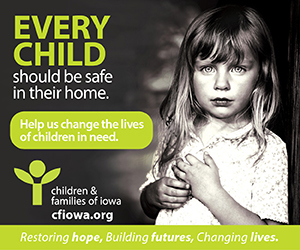Will emerging nonprofit models help sustain local news?

JOE GARDYASZ Jun 15, 2022 | 4:22 pm
13 min read time
2,994 wordsArts and Culture, Business Record Insider, Retail and Business
Editor’s note: This is the first installment of a two-part series looking at challenges to business models in the media industry and the possibility of more community-funded models.
Former journalist Kyle Munson traveled to many of Iowa’s 99 counties while working as the Iowa columnist for the Des Moines Register, a role that capped a 24-year career reporting with the daily newspaper.
In that time, he witnessed the challenges that both the Register and news organizations of all sizes in Iowa and across the country were experiencing as traditional sources of revenue — subscriptions and advertising — were shrinking as technology and culture gravitated toward new digital models while the “mass audience” fragmented.
Though he now works in corporate communications in Des Moines, Munson helps lead a nonprofit news funding organization — the Western Iowa Journalism Foundation — as a new approach for sustainably raising funds to ensure the survival of news organizations in rural Iowa.
So-called news deserts aren’t an issue of concern solely in rural Iowa or rural America – the demise of local independent news organizations in cities of all sizes has been a simmering crisis for the past couple of decades. Additionally, the ramifications go far beyond the vitality of the news industry, because a decline in independent news organizations represents a danger to the freedom of information necessary for a functioning democracy.
It’s an issue that’s starting to gain the attention of business and community leaders across the United States, and in recent years, various funding models have emerged that dramatically reenvision how communities can support independent, locally based, factual reporting.
The emergence of a variety of nonprofit news organizations or philanthropically funded community news funds – and substantial donations flowing into them – indicate that community and business leaders across the United States are recognizing that independent, factual reporting of news represents a vital community resource.
In 2020, Munson co-founded the foundation with Doug Burns, owner and publisher of the Carroll Times Herald. In early 2021, the foundation received Internal Revenue Service tax-exempt recognition. In its first year of operation, the fledgling nonprofit raised $280,454 in 2021 and as of mid-May has already exceeded that initial-year total. To date, it has granted a total of $135,000 in direct reporting support to the Carroll Times Herald, the Storm Lake Times Times Pilot and La Prensa Iowa, a Spanish-language newspaper for Latinos based in Denison.
“It made sense to focus on just a handful of counties where we knew we had concerned stakeholders,” Munson said. “We had to start by not biting off more than we could chew.”
An independent documentary film that was released last year about the Storm Lake Times and its Pulitzer Prize-winning publisher, Art Cullen, also helped shine a spotlight and drive donations. As has support from funders like Microsoft Corp., Munson said.
Local, independent journalism — both in Iowa and across the United States — is facing a financial and existential crisis, say news industry leaders from around the state. It’s equally a matter of concern for community and business leaders because news deserts mean a lack of coverage and the loss of the crucial watchdog role that journalists provide.
A March 2021 research report, “Healthy Local News Ecosystems,” found “consistent evidence that the health of information providers, specifically journalism organizations, and strong relationships among information providers and community members, are correlated with engaged residents, community cohesion, and other positive community outcomes.” The research, funded by Democracy Fund, Google News Initiative and the Knight Foundation, developed a framework of 35 indicators to measure the health of local news and information ecosystems, and applied those measures to nine metro areas across the country.
Among the key findings was that as the number of journalism organizations per capita increases, both community satisfaction and voter turnout in elections increase. In summary, the researchers concluded that: “A healthy news and information ecosystem is a virtuous circle whereby improved information contributes to improved community outcomes.”
The Western Iowa Journalism Foundation is one example of an emerging trend toward leveraging community philanthropy as a sustaining revenue source for news organizations, in the recognition that independent news sources are community assets as vital as schools, hospitals and libraries.
One of the fastest-growing emerging national models of nonprofit-funded news with an Iowa presence is States Newsroom, which in early 2020 rolled out the Iowa Capital Dispatch as its 14th state capital news organization. It’s led by veteran Iowa journalist Kathie Obradovich. Now funding news operations in 25 state capitals, States Newsroom’s goal is to have either a newsroom presence in each state capital or a partnership with an existing nonprofit covering state capital news in all 50 states by 2024.
As a nonprofit organization supported entirely by donor contributions, States Newsroom in 2020 raised nearly $10 million in contributions, with a mission of filling gaps in coverage of state government, particularly for smaller news organizations. The content of each news article written by its outlets can be picked up by any news organization at no cost.
Chris Fitzsimon, founder of States Newsroom, said he believes the organization is filling a valuable role in making sure that important stories are being reported. “We believe that state government is a level of government that has the most impact on people’s lives that they know the least about,” he said. “And so we’re trying to work with other folks in partnerships in any way we can to try to change that.”
Another nonprofit news-funding organization that has formed within the past several years to augment local journalism is Report for America, which places young, emerging reporters in newsrooms by paying half of the reporter’s salary. Co-founded in 2016 by two former journalists, Charles Sennott and Steven Waldman, the initiative over the last three years has enabled local newsrooms to generate more than $10 million in local philanthropy to support community news.
Through its model, participating local news outlets pay one-fourth of the salary, and a local donor pays the remaining fourth. If the arrangement continues for a second year, the news outlet pays an increased share of the salary. Iowa Public Radio is among more than 200 news organizations that have augmented their staffs with Report for America reporters.
Initiatives to establish community news funds have shown promising results in a number of cities. Report for America recently examined the experiences of 10 U.S. cities in which community news funds were established, including in-depth case studies of seven community news fund projects.
Those seven initiatives over the last three years have generated more than $15 million in philanthropy for local news organizations. Those metro areas included Traverse City, Mich., Lancaster, Pa., Fresno, Calif., Lexington, Ky., Seattle, and statewide efforts in Pennsylvania and California.
The report strongly recommends that all community foundations consider the creation of community news funds to catalyze local news support. “Across these communities, the story is the same,” Report for America concluded. “When residents are engaged and informed about the news revenue crisis and invited to help solve the problem, funding emerges, new voices participate in local journalism, and newsrooms become a recognized pillar of the community.”
In January, Report for America announced an initiative with another nonprofit journalism funder, the Local Media Association, to train a group of 20 news organizations across the country on how to catalyze philanthropic innovations in business models. The Meta Journalism Project, a program led by Meta, formerly Facebook, is providing funding support for the project.
In March, the Gazette in Cedar Rapids was among 20 newspapers selected to participate in the six-month training program. “We have watched with great interest as media organizations have developed new funding streams through foundations and other organizations,” said Zack Kucharski, the Gazette’s executive editor, when the announcement was made.
“These streams are important as the business models of media organizations shift,” he said. “We are in the early stages of developing the skill sets and team needed to do that within our organization, and we are excited to have support from coaches and work alongside other teams working toward similar goals.”
Iowa journalists discuss media fragmentation, business models
A small group of journalism professionals recently gathered in Des Moines for a panel discussion titled “The Future of Journalism.”
Des Moines Register Editor Carol Hunter and Carroll Times Herald Editor Burns were among several Iowa news organization leaders who discussed emerging funding models during a panel discussion at the annual Des Moines Book Fair.
“It’s not an overstatement — and there is certainly a fear out there — that the general interest newspaper, the kind of paper that Doug owns in Carroll, the Des Moines Register, could cease to exist at some point in the future,” Hunter said. “That’s the extreme dark side. And if that were to happen, it means that the reporter who has been covering the city council and the school board and the police department wouldn’t be there anymore.
“And it also means that reporters wouldn’t be there to cover what I call stories of community cohesion — that’s everything from the new business opening down the street, to the fundraiser for the community member that was injured in a car accident, to the play being staged at the local theater.”
Digital channels have long been a double-edged sword for the business of journalism, simultaneously dividing and multiplying media channels while also enabling them to increase audience reach.
Kathie Obradovich, editor of the Iowa Capital Dispatch, noted: “I wouldn’t have an audience for online news, and I bet Carol wouldn’t either, without Facebook, without Twitter. We spend a lot of time sharing our content online because if we didn’t, no one would ever know that it’s out there. Every time a Facebook algorithm changes, we move up and down with how much of an audience we can find, and it’s based on something that’s not transparent and that we don’t know about in advance.”
She added, “I do think that people are starting to develop an appreciation and understanding about how important news coverage is to understanding and to democracy.”
Laura Belin, a political journalist whose contributions to Bleeding Heartland beginning in 2007 progressed from what she called an “out-of-control hobby” to an “out-of-control business,” said the vast majority of her revenue comes from reader contributions. “My readers feel a really strong connection to my website, so that’s how I’m able to cover costs,” she said. Belin describes her editorial policy as “really solid, research-based reporting, but also not shying away from taking a position on the issues — so not pretending to be neutral.”
Belin said she decided early to keep all of her content open on her site. “People donate because they want to support the work because they know these are stories that they can’t read elsewhere,” she said.
“The thing I’m most pessimistic about is there aren’t enough people to cover [important news]. The majority of the Polk County Board of Supervisors meetings aren’t even really getting any coverage unless there’s something interesting. I don’t have the bandwidth to cover all the stories.”
With the explosion of digital media, much of the traditional mass audience that once sustained local journalism “just kind of evaporated,” Hunter noted. “Some of it’s because of just the proliferation of where you can get news. I mean, I find it sublime that I can read the New York Times and its great international reporting. … But what’s missing is the infrastructure to support that general-interest journalism.
“My fear is that because of the increased polarization of society and increased tribalism that they’re going right to [either a progressive or conservative-leaning] website where they feel very comfortable, they see and get reinforced on what they believe in, and skip right over some of the objective journalism that a paper like Doug’s and mine try to provide each day.”
Hunter said that diversification efforts toward more events-driven revenue and specialty newsletter subscriptions are going to be key to larger news organizations like the Register.
“RAGBRAI was kind of a trailblazer of that nearly 50 years ago, but now we do things like Des Moines Storytellers, the All Iowa Auto Show, the Iowa Sports Awards,” she said. “We do 14 newsletters now that go to targeted audiences; we’re going to start more of those. You’ll find us increasing our presence on Instagram. We need to be able to go wherever the audience is, and it’s on all of these different platforms. I think the larger regional papers are starting to find their footing through subscriptions models.”
Susan Patterson Plank, executive director of the Iowa Newspaper Association, said she believes the solution for ensuring continued funding for journalism will be seen through many possible business models.
“When you listen across this table, what you hear are lots of people doing lots of different things,” she said. “And I truly believe that that’s where the solution is. I don’t have to be 100% in on the nonprofit model, any more than I have to be 100% in on the for-profit model. I don’t have to be 100% in on being a newspaper; I don’t have to be 100% in on being digital. I think that the solution is going to be in lots of places.”
Community foundation and philanthropic support for news organizations
Community foundations across the United States are increasingly becoming involved in establishing initiatives or grants to support the funding of local journalism.
Supporting local journalism in creative ways is one aspect of an initiative developed by Community Foundations Leading Change (CF Leads), which in a 2019 report identified three areas of momentum in which community foundations can take a greater leadership role: insisting on racial equity, amplifying community voice, and influencing public policy and systems.
According to that research report, titled “Going All In,” a majority of Americans surveyed said they were not satisfied with the way democracy is working in the United States.
“A lack of trust in major institutions, including the news media, combined with a steady decline in local journalism and an increase in misinformation, is affecting Americans’ ability to stay informed about issues impacting their lives,” the report stated. Among indicators of that:
- Only 27% of Americans agree with the statement that “elected officials care about ordinary citizens.”
- Half of all Americans have “hardly any confidence inthe press.”
- More than a quarter of the country’s newspapers have vanished over the past 15 years, along with half of all local journalist jobs.
There have been numerous community responses to the need, however. According to research conducted by Report for America, from 2009 to 2021, community foundations across the United States contributed $124 million in “journalism, news and information” grants to 700 recipient organizations.
Community news funds have been established in rural as well as urban communities and have supported both for-profit and nonprofit newsrooms, the report noted.
The Business Record reached out to the Community Foundation of Greater Des Moines to ask whether community foundations in Iowa have become engaged in any known community news funds. The Greater Des Moines Partnership was also asked to weigh in, and assisted by putting out a request to its network of business communications contacts asking whether businesses have encountered initiatives in Iowa.
While no apparent examples of community foundation-based news funds emerged, Community Foundation of Greater Des Moines leaders pointed to the CF Leads report, as well as community news funds supported by community foundations in Philadelphia, Cleveland and in Arkansas and Delaware.
A Report for America summary of efforts cites support by community foundations of journalism funding. Among the examples: In New Haven, Conn., the Community Foundation for Greater New Haven is funding a community-focused news organization, the New Haven Independent. Community foundations in Denver, Colo., and Wichita, Kan., are also funding community journalism nonprofits.
Lexington, Ky., is one of the communities whose journalism philanthropy was profiled by Report for America. The Bluegrass Community Foundation’s president and CEO, Lisa Adkins, “connected the dots between social justice, vibrant communities and local news” by regularly attending the Knight Media Forum, an annual gathering of funders and media leaders seeking to strengthen local news, according to the case study. Since 2019, the community foundation there has co-funded a Report for America reporter to cover critical health issues for the local newspaper, the Herald-Leader.
The Bluegrass Community Foundation also hosts a Fund for Civic Journalism. The first project of the collaboration has been the Our Voices Project that has been appearing since last fall, featuring original commentary by members of the community on the effects of racism in areas including housing, economic opportunity, health care, education and the justice system.
“Investing in local journalism is critical if you care about the health and vibrancy of your community. If you are looking to enhance civic literacy and community engagement,” Adkins stated. “If you care about the quality of local government, local schools, and local public institutions, then investing in local journalism is a simple, cost-effective strategy.”
Look for the second installment of this series in the next edition of the Business Record.
Report For America outlines best practices
To be successful, community news funds should:
- Encompass multiple funders of varied giving levels.
- Pursue multiyear contributions with a fund goal of six and seven figures depending on the community size.
- Demonstrate and articulate that the community (not merely the newsroom) is the beneficiary of improved local news.
- Direct funding support to more than one newsroom, where feasible, to better serve an entire community.
- Create a steering committee of civic leaders that eventually grows to become a board of governance for fund expansions and dispersals
- Ensure with local news partners that the community benefits from a wide range of types of reporting (investigative, hyperlocal, features, etc.) and targets of coverage (e.g., health, education, environment, criminal justice, economic development).
To read Report for America’s Community News Funds Report, visit this link: www.reportforamerica.org/communitynewsfunds
Other online resources:
Western Iowa Journalism Foundation: www.westerniowajournalismfoundation.com
States Newsroom: www.statesnewsroom.com










